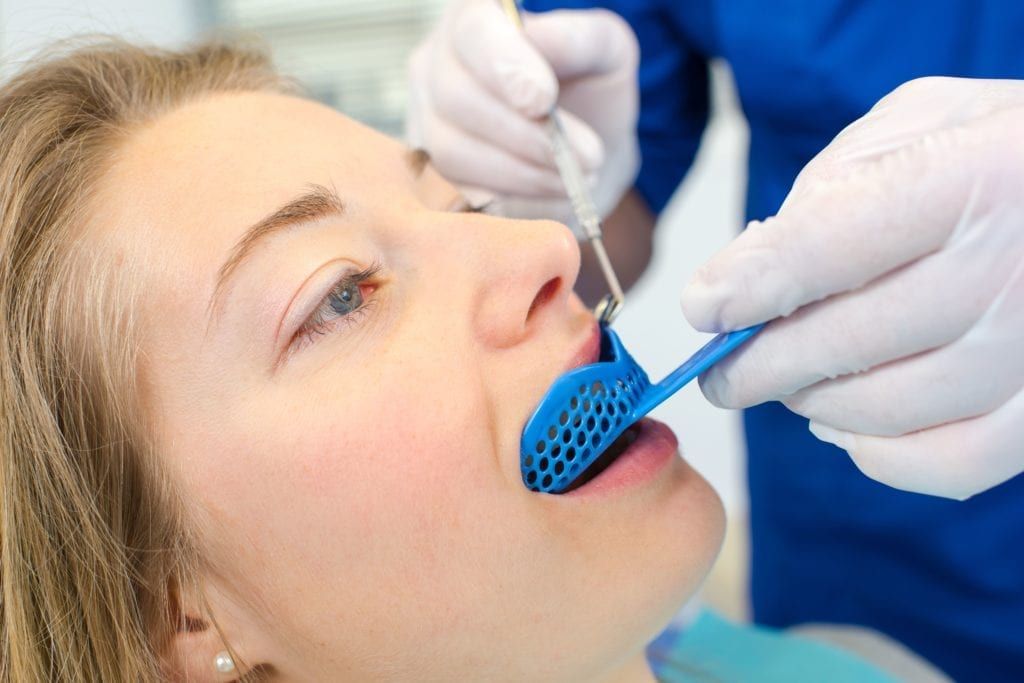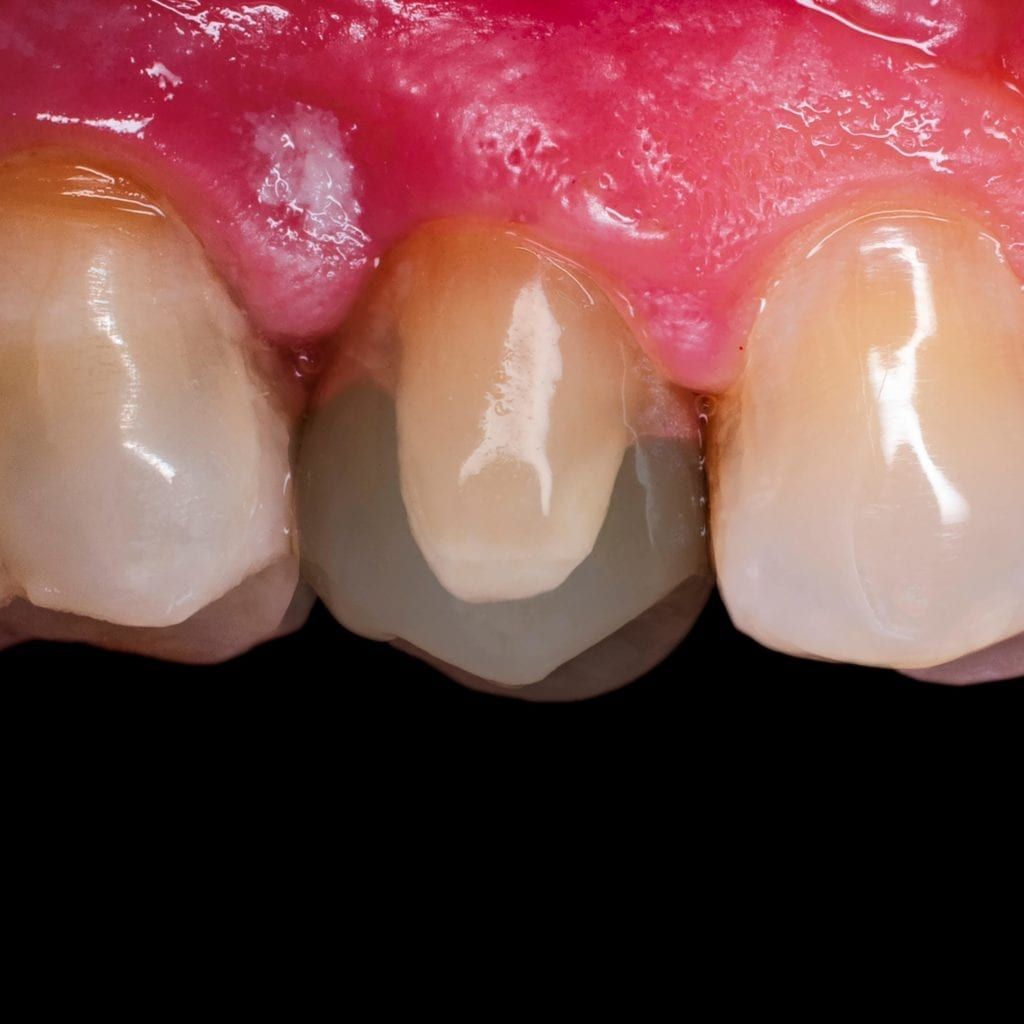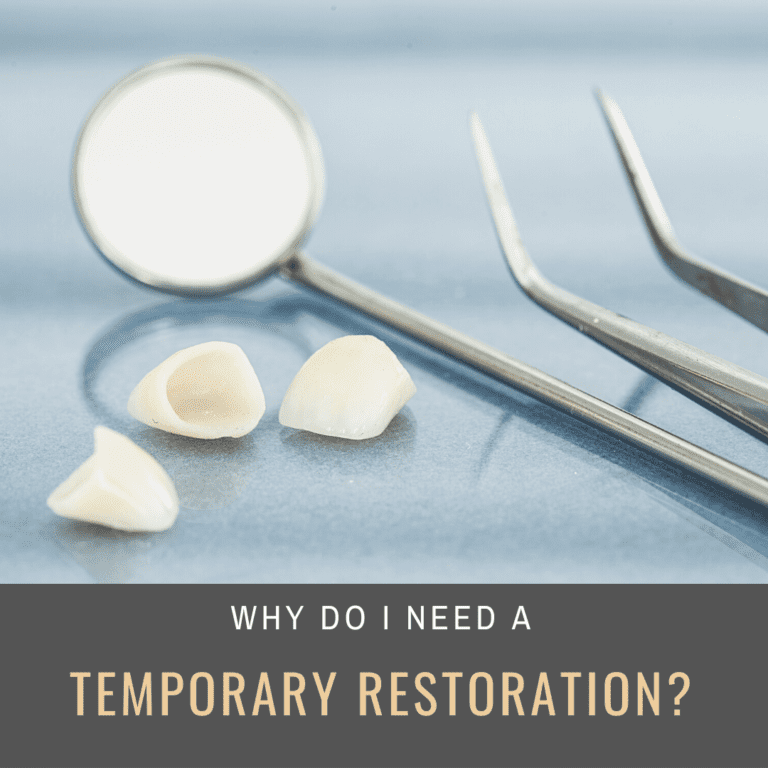Do you know what a temporary restoration is? If not, you’re not alone. When many people hear the term “dental restoration” they think of things like fillings, crowns, or veneers. However, what you may not know is that there are two different types of restorations: direct and indirect. Direct restorations can be completed within the mouth in a single appointment, like composite fillings. Indirect restorations, on the other hand, require a minimum of two appointments. They also require the use of a temporary restoration.

An indirect restoration is any type of restoration that needs to be fabricated outside the mouth using a dental laboratory. Some examples of indirect restorations include crowns, bridges, inlays, onlays, and veneers. To place an indirect restoration, the tooth must be first be shaped so that the designated restoration will fit. Then, a dental impression or oral scan is taken to obtain the information needed for the dental lab. At the end of this first appointment, the temporary restoration will also be placed.
Temporary restorations are just as their name suggests: temporary. They are only worn during the brief span of time between your first and second appointments. During your second appointment, the temporary will be removed to allow for the permanent restoration to be placed. Even though they are only worn for a short amount of time, temporary restorations play an important role in the restoration process. Here are some reasons why you need a temporary restoration:
For Protection
Before having an indirect restoration placed, your natural tooth structure will be altered to some extent. In addition to removing any decayed tissue, the remaining tooth structure will need to be shaped according to the type of restoration being placed. This ultimately means that you can expect to have areas of thin enamel and/or exposed dentin, both of which can make your tooth especially vulnerable to tooth sensitivity or bacteria inside the tooth (pulp infection). To prevent this from happening, a temporary restoration is placed over the treatment site to act as a protective barrier.
For Preserving Function
There are two main functions your teeth are important for: eating and speaking. When it comes to eating, temporary restorations allow you to continue to eat most of your normal diet by protecting the tooth and maintaining your usual bite. When it comes to speaking, temporary restorations keep the same size and shape of your tooth to prevent temporary speech impediments.

To Preserve Space
As a result of having the natural tooth structure altered in terms of shape or size, the surrounding teeth may shift in position slightly. Unfortunately, even the slightest of movements can make it so that the permanent restoration will no longer fit. However, placing a temporary restoration holds all the surrounding teeth in their original position, which maintains an adequate amount of space for the final restoration.
To Contour the Gums
Not only do temporary restorations preserve the right amount of space, but they also help to preserve the natural way that the gums connect to the tooth. This is important because it maintains an even gum line, which allows your dental restoration to blend in with the rest of your smile. Without a temporary restoration the gum line can change, which could make your permanent restoration more noticeable.
For Previewing Your Results
The final reason for placing a temporary restoration is so that you can get a preview of what your smile will look like with the new restoration. You will also get to experience the fit and feel of the restoration before the permanent is placed.




